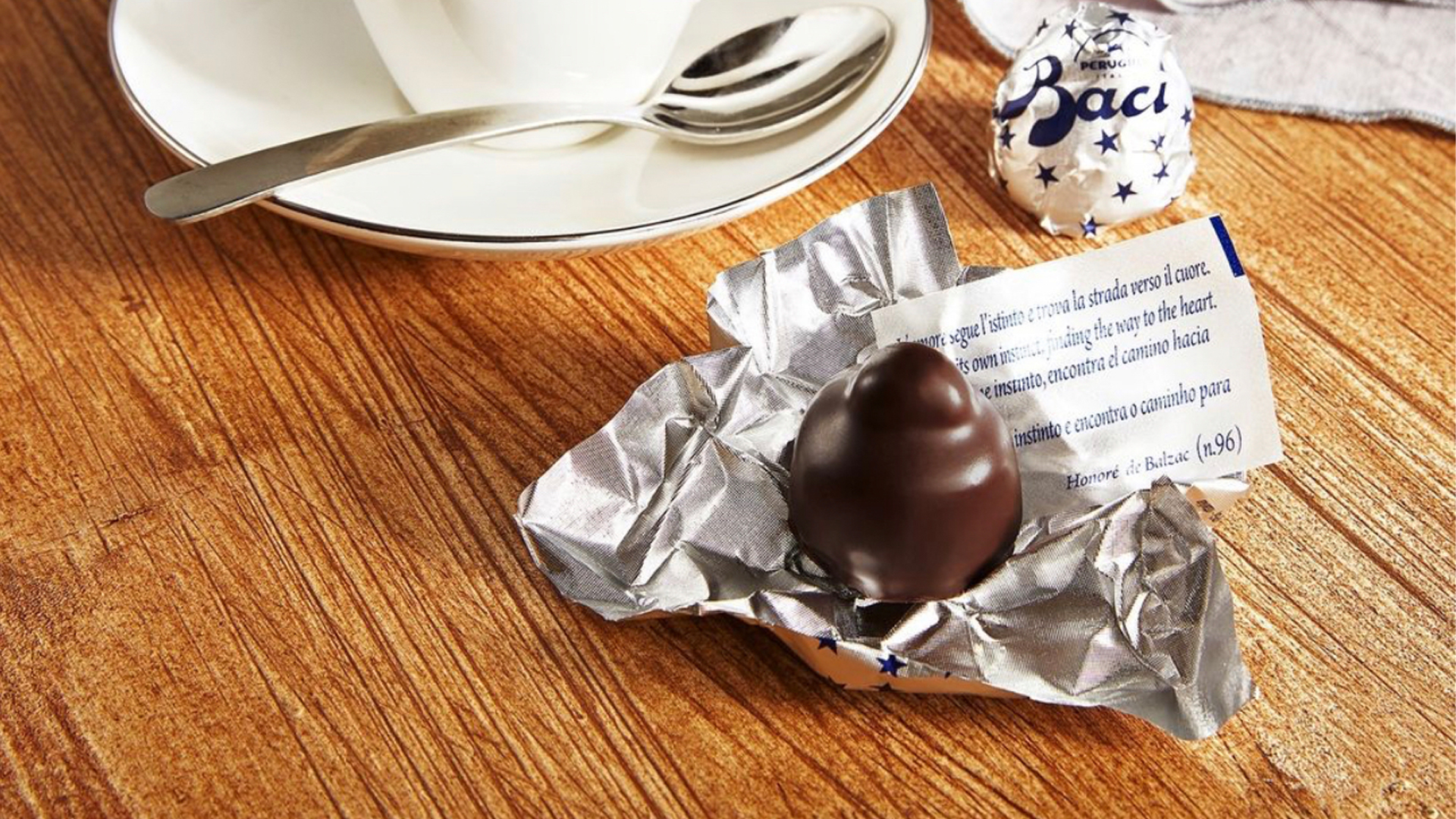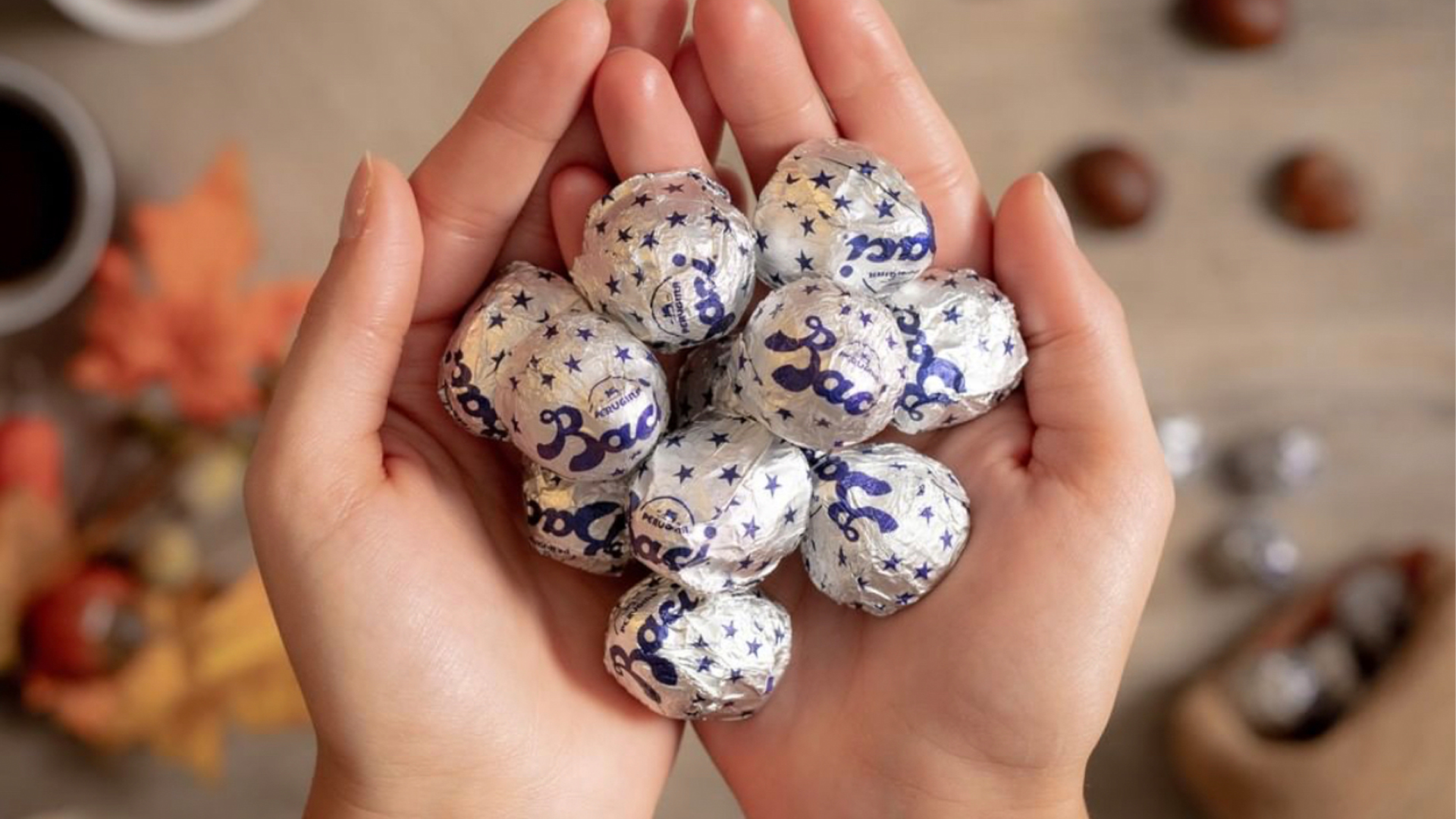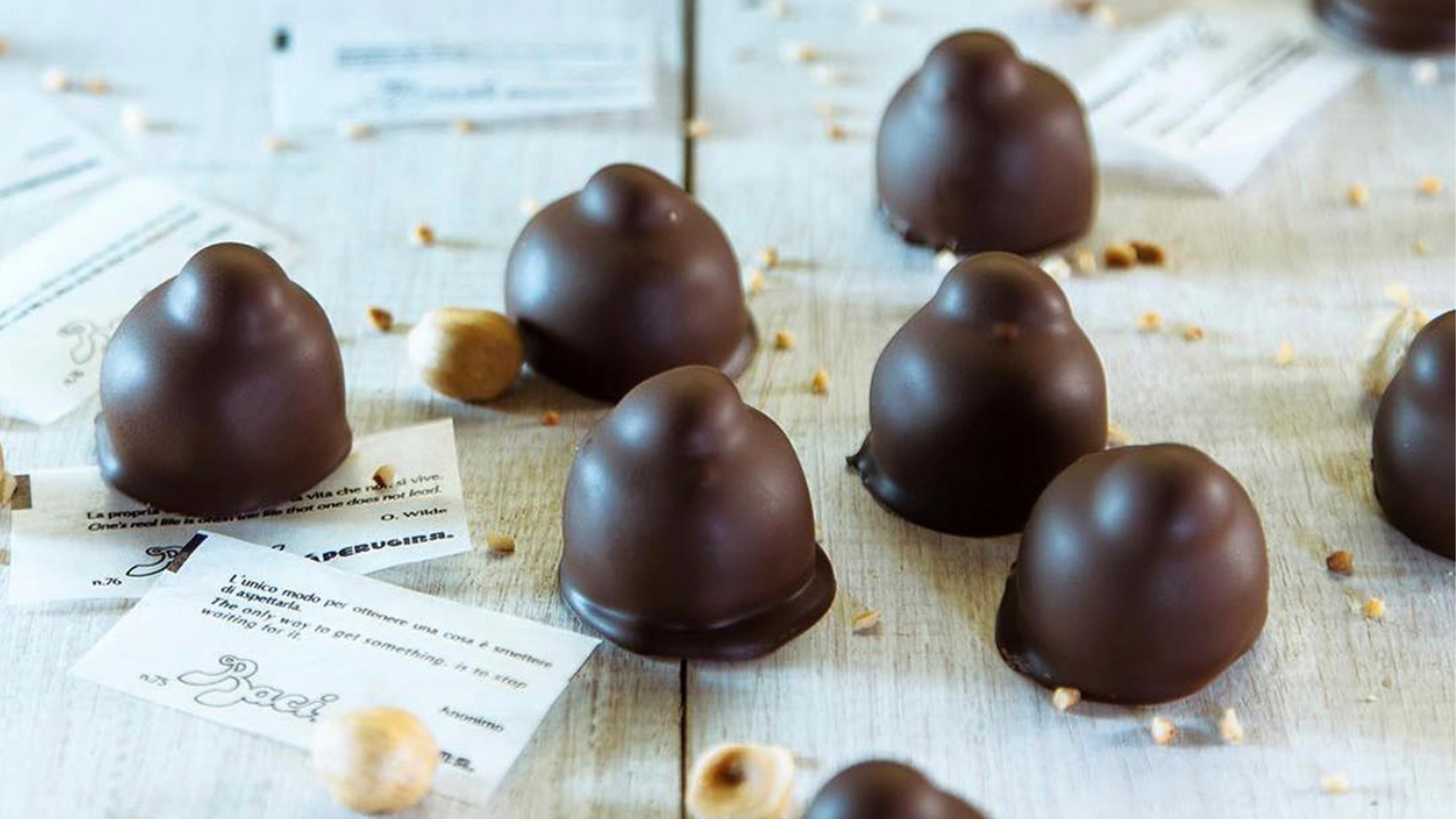Valentine's Day is just around the corner, so now is as good a time as any to talk about Italian chocolate. Italy has a number of classic candies, but one, in particular, is especially romantic: Baci, meaning "kisses." This isn't just a sweet story about candy either, but a romantic one between candy makers.
The Perugina company's Baci are a century-old candy confection but don't confuse them with the American Hershey Kiss. Hershey's lump of bitter chocolate was introduced in 1907, but Baci are a far more complex candy and the delicious formula saved an ailing candy company.
In 1901, Luisa Spagnoli and her husband, Annibel Spagnoli, launched their first business, a small grocery shop. The shop was located in the industrial town of Perugia, the capital of Umbria, located in central Italy. In addition to groceries, the Spangolis sold jams and candies they manufactured themselves. They enjoyed modest success, but their fortunes would change when the Buitoni company came to the region to manufacture pasta.
Franceso and Antonio Buitoni were expanding the family-owned pasta manufacturer, and setting up regional factories. Their grandmother, Giulia Buitoni, had founded the company in 1827 and it continued to grow over several generations. The brothers arrived in Perugia to construct a factory a few miles away when Francesco saw an opportunity in partnering with the Spagnolis on a new venture. In 1907, they set up the Società Perugina per la Fabbricazione dei Confetti, a candy company.

(photo credit: baci perugina via instagram)
For the next fifteen years, the company struggled to survive. Just two years after its founding, it was near bankruptcy, and Francesco's son Giovanni joined the team. Smaller regional companies were finding it increasingly difficult to compete with larger conglomerates. Giovanni was ahead of his time in many ways, pushing to expand through advertising and strong branding.
With the outbreak of World War I, the men were sent to the war, leaving Luisa to run the candy factory with her young children. During this time, she led numerous innovations in efficiency. The war had created shortages of sugar, and Luisa was the one who refocused the company on chocolate manufacturing and formulated a product to use less of it.
Her first big innovation was the creation of rich dark chocolate, about fifty percent cocoa. Chocolate contains milk, sugar, and cocoa with milk chocolate typically having less than 40 percent cocoa, although often much less. The darker the chocolate, the less sugar is required.
In 1921, the company launched the "Luisa Tablet," a trademarked brand for thin chocolate bars. This chocolate proved immediately popular, and today Perugina still sells tablet-style chocolate.
Luisa also innovated workplace maternity protections. She installed a nursery at the factory to provide childcare and ensure women could continue working even after having a child, an innovation unheard of in most workplaces even today.
When Giovanni returned following the war, he set out to modernize the factory equipment and again focused on brand building and marketing.
Meanwhile, Luisa turned to cost-cutting and her efforts led to the most significant product produced by the company. Through her efforts, she observed a large number of wasted hazelnuts in their production line. Seeking a solution, she created the Cazzotto, meaning a fist punch. The new candy used Gianduia, a thick, rich hazelnut spread similar to Nutella, the excess hazelnuts, and the dark chocolate she had previously created to form a lumpy chocolate candy.

(photo credit: baci perugina via instagram)
However, the Cazzotto was not meant to be – the name struck Giovanni as far too violent, especially as the country recovered from World War I. Instead, he suggested renaming the candy Bacio, a term meaning "a kiss." The candy launched in time for Valentine's Day 1922.
The following year, Luisa's husband Annibal retired from the company, and soon after, from their marriage.
Luisa, who continued working at the factory, and Giovanni slowly began to fall in love. Giovanni would leave missives around the factory for Luisa, and these would inspire the love messages contained in the Baci wrappers beginning in the 1930s.
Tragically, Luisa was not long after being diagnosed with cancer. She sought treatment in Paris but died of the disease in 1935. Four years later, Perugina would open a store on 5th Avenue in New York City.
Giovanni continued to grow the chocolate company. In 1936, he married opera singer Letizia Cairone. Together, the pair traveled to the United States in 1939 at the invitation of the Hershey Chocolate company.
With the outbreak of World War II, the couple was trapped in America. The war also cut off their finances from the Buitoni and Perugina companies. Giovanni, after selling his wife's jewelry, did what he did best: he set up a pasta manufacturing factory and grew the business. Fifteen years later, the American Buitoni company had a large factory in South Hackensack, New Jersey.
In 1953, Giovanni returned to Italy and reunited the Buitoni companies under a family-controlled multinational conglomerate. Giovanni continued to push the expansion of the company, relying heavily on advertising to do so. In 1985 he sold Buitoni to Italian industrialist Carlo De Benedetti, who in turn sold Buitoni to Nestlé.
As for Perugina, the company continued manufacturing chocolate candies through the 20th century. The iconic chocolate banana was born in 1925. In 1965, the company introduced its first chocolate bars including a crispy puffed rice bar and a caramel bar. During this period, a pistachio-flavor Baci is rumored to have been experimented with, but never took off. Nestlé acquired Perugina in 1988, and it remains a division of the multinational conglomerate.
As part of Nestlé, Perugina products have found markets around the world, and new, interesting marketing partnerships. The company has been launching new flavors of the iconic candy in recent years and is now available in more than 55 countries.

